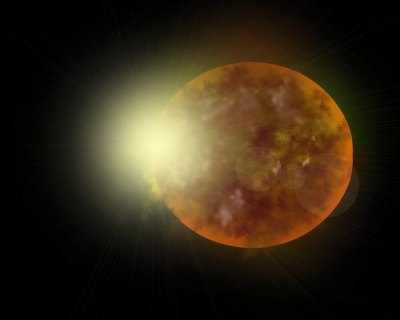
The planet, designated HIP 116454b and spotted by lead researcher Andrew Vanderburg, a graduate student at the Harvard-Smithsonian Center for Astrophysics in Cambridge, Massachusetts, is too hot for life as we know it. It is two and a half times larger than Earth and follows a nine-day orbit around a star that is smaller and cooler than our sun. The planet and star are 180 light-years from Earth, toward the constellation Pisces.
Kepler’s camera detects planets by looking for transits -- when a distant star dims slightly as a planet crosses before it. The smaller the planet, the weaker the dimming, so brightness measurements must be precise. To achieve that precision, the spacecraft must hold steady. In May 2013, data collection during Kepler's extended prime mission came to an end with the failure of the second of four reaction wheels used to stabilize the spacecraft. (Even so, scientists have continued to make findings from data gathered before the problem.)
Unwilling to give up, a team of scientists and engineers developed a strategy to use pressure from sunlight as a virtual reaction wheel to help control the spacecraft.
As a result, the new mission, called K2, will continue Kepler’s planet hunt, while expanding the search to nearby stars with planets that can be studied in detail. K2 also will observe star clusters, active galaxies and supernovae, according to NASA.
Since the K2 mission officially began in May of this year, it has observed more than 35,000 stars and collected data on star clusters, dense star-forming regions, and several planetary objects within our own solar system.
Related:
NASA report prompts talk of extraterrestrial life
NASA In Brief -- Scientists discover 750 new worlds; spacesuit helmet leak probed